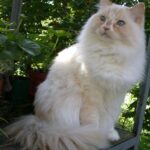If you’ve ever taken your dog for a walk, you’ve likely witnessed the excitement that ensues when they encounter a stick. It’s as if they’ve discovered a hidden treasure! But have you ever wondered why our furry friends are so captivated by these simple pieces of nature? While it may seem like a quirky quirk, there’s actually a fascinating combination of instinct, behavior, and sensory delight that drives this obsession.
In this article, we’ll delve into the science behind why dogs are drawn to sticks, exploring everything from their evolutionary history to the textures and smells that pique their interest. So grab a stick (or just your curiosity) as we uncover the reasons behind this age-old canine fascination!
Table of Contents
- Why Sticks Spark Joy in Your Dogs World
- The Natural Instincts That Drive Stick Fetching
- Understanding the Physical Benefits of Stick Play
- Enhancing Your Dogs Playtime with Safe Alternatives
- Q&A
- Final Thoughts
Why Sticks Spark Joy in Your Dogs World
When dogs engage with sticks, they tap into their natural instincts, igniting a deep-seated sense of play and exploration. The texture and shape of a stick can mirror the primal roots of hunting and foraging, allowing dogs to exercise their instincts in a safe and familiar environment. This act can be both mentally and physically stimulating, rewarding them with a sense of accomplishment. It’s not just about fetching; it’s about feeling connected to their ancestors and the world around them. Dogs often relish the tactile experience of chewing and manipulating a stick, which can provide comfort and satisfaction akin to a child’s fondness for their favorite toy.
Moreover, sticks serve as a versatile tool for social interaction amongst dogs. When a dog picks up a stick, it can act as an invitation for play, creating an opportunity for bonding with both their human companions and fellow canines. This simple object fosters teamwork, as dogs engage in games of tug, chase, and fetch. The thrill of chasing a thrown stick or the excitement of competing for possession can elevate their mood and strengthen their social skills. In essence, sticks are not just objects; they are gateways to joy, connection, and enrichment in your dog’s life.
The Natural Instincts That Drive Stick Fetching
Dogs are wired with instincts that can often surprise their owners, and one of the most fascinating among them is the drive to fetch sticks. This behavior can be traced back to their wild ancestors, who relied on their hunting skills to survive. The act of retrieving a stick mimics the chase and capture of prey, stimulating your dog’s natural hunting instincts. When a dog spots a stick, their instincts kick in, leading to an exhilarating game of fetch that not only entertains but also exercises their bodies and minds.
Moreover, sticks are a sensory delight for dogs. The smell, texture, and movement of a thrown stick engage their senses in multiple ways. The sound of the stick hitting the ground or rustling through the grass adds to the excitement. Below are some reasons why dogs might be particularly captivated by sticks:
- Textural Variety: Sticks come in various shapes and sizes, each offering a different texture that intrigues your dog.
- Natural Chewing Behavior: Chewing on sticks allows dogs to satisfy their natural desire to gnaw and explore through taste.
- Social Interaction: Playing fetch with a stick often means quality time with their human, reinforcing social bonds.
Understanding the Physical Benefits of Stick Play
Engaging in stick play offers an array of physical benefits for your furry friend, contributing to their overall health and wellness. When dogs gnaw on sticks, they are not only exercising their jaws but also stimulating their gums, which can reduce plaque buildup and promote oral hygiene. The act of chewing is a natural instinct, and when dogs are allowed to indulge in this behavior, it helps to strengthen their teeth and jaw muscles. Furthermore, retrieving sticks encourages physical activity, improving cardiovascular health and aiding in weight management.
Additionally, stick play provides an excellent opportunity for dogs to engage in natural behaviors like running and jumping. The chase and retrieval not only burn off excess energy but also improve coordination and agility. This playful exercise can lead to a happier, more balanced dog. Here are some key benefits associated with stick play:
Promotes dental health
Encourages physical exercise
Enhances mental stimulation
Strengthens social bonds through play with owners and other dogs
Incorporating stick play into your dog’s routine can be both beneficial and enjoyable. The simple act of fetching a stick allows dogs to engage in their natural instincts while providing a variety of physical benefits that contribute to their overall happiness and well-being. Always remember to supervise your dog during play to ensure they’re safe and enjoying their time outdoors.
Enhancing Your Dogs Playtime with Safe Alternatives
While your canine companion may have a natural affinity for sticks, it’s essential to provide them with safe alternatives that keep playtime fun and secure. Consider introducing items that mimic the texture and length of sticks but are designed specifically for safe play. Look for rubber sticks, soft frisbees, or plush toys that can withstand rigorous chewing without posing a risk to your dog’s health. These alternatives can help prevent potential injuries caused by splinters or choking hazards associated with traditional sticks.
Additionally, engaging your dog with interactive toys can enhance their play experience and help channel their energy constructively. Here are some excellent options to consider:
Chew Toys: Durable materials designed to satisfy your dog’s chewing instincts.
Fetch Toys: Balls or discs that encourage running and retrieving.
Puzzle Toys: Stimulate your dog’s mind while providing a rewarding challenge.
By incorporating these safe alternatives into your dog’s play routine, you can ensure they enjoy their time while minimizing risks. Keep an eye on their preferences, and rotate toys regularly to keep things fresh and exciting!
Q&A
Q1: Why do dogs love sticks so much?
A1: Dogs are naturally curious and playful creatures. Sticks can stimulate their senses—sight, smell, and touch—making them an exciting toy. The texture and smell of wood can be appealing, and the act of chewing provides both physical and mental stimulation. Additionally, sticks mimic the shape of bones, which are instinctively appealing to dogs, satisfying their natural chewing instincts.
Q2: Is it safe for dogs to chew on sticks?
A2: While chewing on sticks can be entertaining for dogs, it does come with risks. Splintering can occur, leading to potential injuries in their mouth, throat, or digestive tract. It’s important to supervise your dog while they play with sticks and provide safer alternatives, like rubber or nylon chews, which can fulfill that chewing desire without the hazards.
Q3: Do all dogs like sticks?
A3: While many dogs enjoy sticks, preferences can vary based on individual temperament and past experiences. Some dogs might be more inclined to fetch or chew sticks, while others may prefer toys or balls. It often depends on the dog’s breed, age, and personality.
Q4: How can playing with sticks benefit my dog?
A4: Playing with sticks can provide exercise, enhance their natural instincts, and promote bonding time between you and your dog. It encourages physical activity and can help with mental stimulation as your dog engages in fetch or other stick-related games.
Q5: Are there any alternative toys that mimic the fun of sticks?
A5: Absolutely! There are many stick-like toys available that are designed to be safer for dogs. Look for toys made from durable materials that can withstand chewing, such as rubber sticks or plush toys shaped like sticks. These alternatives can provide the same satisfaction without the risks associated with natural sticks.
Q6: Should I let my dog play with sticks at the park?
A6: It’s generally okay for your dog to play with sticks at the park, but you should proceed with caution. Monitor your dog closely to ensure they’re not chewing on splintered or rotten wood, which could be harmful. If you notice any signs of choking or if your dog seems distressed after chewing on a stick, seek veterinary help immediately.
Q7: What can I do to discourage my dog from playing with sticks?
A7: If you’d like to redirect your dog’s attention away from sticks, start by providing engaging alternatives, such as toys that squeak or are filled with treats. Encourage play with these toys during walks or outdoor time. Consistent training and positive reinforcement can help establish new habits.
Q8: Is there a way to safely incorporate sticks into my dog’s playtime?
A8: Yes! You can make stick play safer by choosing thicker, sturdy sticks and supervising your dog while they play. Regularly check the stick for splinters and replace it if it starts to break down. Alternatively, you can take a safe, durable stick-shaped toy to let your dog experience the joy of “stick” play without the risks.
By understanding the science behind your dog’s obsession with sticks, you can foster safer, more enriching playtime that satisfies their instincts while keeping them safe and happy!
Final Thoughts
the fascination dogs have with sticks is a delightful blend of instinct, sensory stimulation, and pure joy. Understanding the science behind this behavior not only deepens our appreciation for our furry friends but also enhances our interactions with them. Whether it’s the thrill of the chase or the satisfying texture of a well-chosen stick, these simple objects provide endless entertainment and engagement. So the next time your dog trots over with a prized stick in their mouth, remember that it’s more than just a plaything—it’s a connection to their natural instincts and a source of happiness that brings them closer to you. Embrace their stick obsession and enjoy those playful moments together; after all, it’s these little things that make our bond with our dogs truly special. Happy fetching!
















